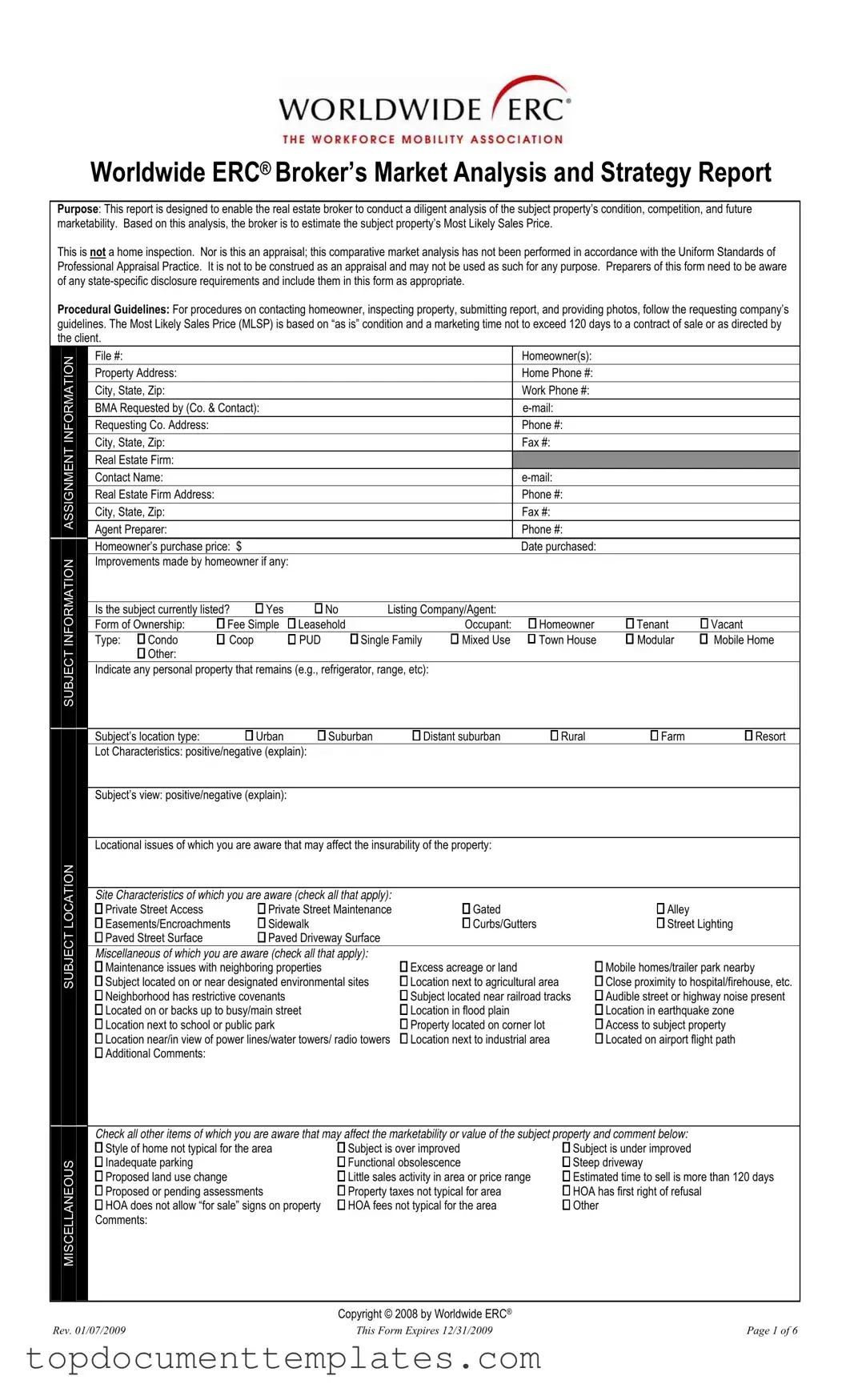The ERC Broker Market Analysis form is a vital tool for real estate brokers looking to assess a property's market position and potential sale price. This report guides brokers through a thorough evaluation of the property, its condition, and the competitive landscape. It aims to help estimate the Most Likely Sales Price (MLSP) based on the property’s current state and expected marketing timeframe. Importantly, this analysis is not an appraisal and does not conform to appraisal standards, so it should not be used as such. The form requires brokers to gather specific information about the property, including its location, features, and any improvements made by the homeowner. Additionally, it prompts brokers to note any potential issues that may affect the property’s insurability and marketability. By following the procedural guidelines, brokers can efficiently collect data, inspect the property, and submit their findings, ensuring compliance with any state-specific disclosure requirements. This comprehensive approach allows brokers to provide accurate and insightful market analysis, ultimately aiding homeowners in making informed decisions about their real estate investments.
